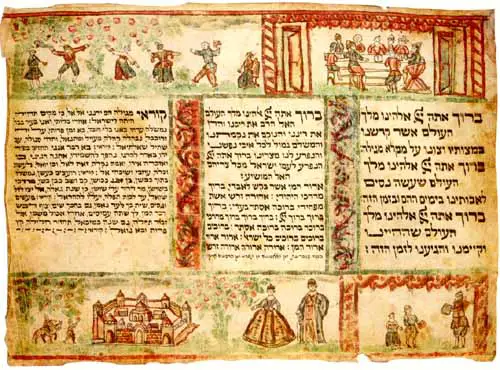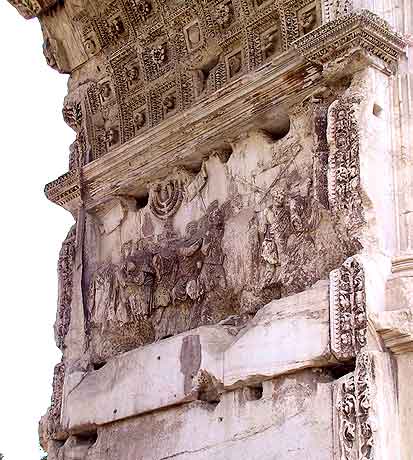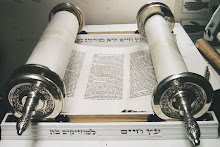
Passover/Pesach is the beginning of the Jewish religious New Year. This feast is a rememberance of God’s deliverance from slavery and the Exodus from Egypt. It’s also the time of the sacrifice of Messiah.
Unleavened Bread/Hamatzah is the week-long observance of removing the leaven from our homes and the eating of matzah. This also commemorates the Exodus and symbolizes the removal of sin (leaven) from our lives. Messiah, the Bread of Life, was in the grave during this feast.
First Fruits occurs on the first day following the Sabbath after Passover. This celebration is to remember that our first and best harvest belongs to the Lord. Yeshua the Messiah resurrected on this day.
Lag B Omer and M' B OmerCounting the Omer was an agricultural function. Many of the holidays in Jewish tradition are rooted in an ancient agricultural calendar. Counting one Omer per day from the second night of Pesach, we arrive at Lag B Omer, the 33rd day from Pesach en route to Shavuot, which is the 50th day. As Adonay in Leviticus commanded:
When you enter the land I am going to give you and you reap its harvest, bring to the Kohen (priest) a sheaf of the first grain you harvest (Leviticus 23:9[10] NLT).
 Mount Sinai where the give of the Torah to the Jewish people
Mount Sinai where the give of the Torah to the Jewish peopleShavuot, also known as the Feast of Weeks, takes place fifty days after First Fruits. This, fifty day, commemorates the giving of the Torah to Moses at Mt. Sinai and the giving of the Holy Spirit at Pentecost.
Rosh Hashanah, or Feast of Trumpets, is the Jewish Civil New Year. This feast marks the fall harvest, is a rememberance of the time of Creation, as well as a time of introspection and repentance in anticipation of Yom Kippur. This is the time of the second coming of Messiah.

Atzeret Yemei Teshuvah (The Ten Days of Repentance)
Yom Kippur (Day of Atonement) is the holiest day on the Jewish calendar. It is the day when the High Priest would enter the Holy of Holies and offer sacrifice for Israel. This festival is a time of reflection and solemn worship, mingled with a joyous anticipation for the Wedding Day of the Lamb.


Sukkot, or Feast of Tabernacles, marks the seventh festival of God’s appointed times. This is a remembrance of the Hebrews dwelling in tents during their wanderings through the desert for forty years. It is a time of celebration and thanksgiving to God for dwelling in our midst.

Simchat Torah, our time of “Rejoicing with the Torah," is a celebration that marks the conclusion of Sukkot and the renewal of the cycle of Torah readings.


Purim, also known as the Feast of Lots, remembers the time the
Jewish people were in Persia and God’s protection and deliverance
through Esther. This is a time of joyous fun and humor.
Rosh Chodesh"
Rosh Chodesh"

Rosh Chodesh
The fast is observed on the day immediately following Rosh Hashanah, the third of Tishrei. In the Prophetic Writings this fast is called 'The Fast of the Seventh' in allusion to Tishrei, the seventh month.

He was there. "'I was naked and you clothed me, I was sick and you visited me, I was in prison and you came to me.' Then the righteous will answer him, saying, 'Lord, when did we see you hungry and feed you, or thirsty and give you drink? And when did we see you a stranger and welcome you, or naked and clothe you? And when did we see you sick or in prison and visit you?' And the King will answer them, 'Truly, I say to you, as you did it to one of the least of these my brothers, you did it to me.'" (Matthew 25:36-40 ESV).
[...] Today, is Yom Ha Shoah, which means: Day of the Destruction. Its
English rendering is Holocaust Remembrance Day. The word "holocaust"
has come to mean some form of mass genocide. It is an attempt to
exterminate a people. But the origin of the word comes from the Greek:
holos caustos, which is used in the Greek Septuagint (circa 230 BCE), a
translation of the Hebrew Bible. It translates the Hebrew word "Olah"
into holocaust. Olah is the whole-burnt offering that was required for
sacrifice in the Chumash (Pentateuch). Jesus was the
"holocaust" in this classic definition.
Where the modern definition and the ancient definition coincide is in
the area of suffering. Satan was trying to destroy Jesus in the same
way he has tried to destroy the Jewish people. But the cross became the
means for Satan's eventual demise. Oh yes, the Devil is very much alive
and active today, but a day will come when he will be imprisoned and
judged forever. Because "Yeshua Chai" (Jesus lives), so too shall
Israel, the Jews. Am Yisrael Chai (the people of Israel live) is
predicated on Jesus' resurrection. Without His work of atonement by His
death and overcoming death, hell and the Devil by His resurrection
there would be no chance of survival for anyone Jew or Gentile.
Faith in Jesus can turn the nightmare of holocaust experience into a
powerful identity with His suffering. He rose from death, which has the
power to turn that nightmare into the beautiful dream of Chesed (Hebrew
for grace). So it is possible to remember another holocaust that can
give absolute victory over the trama of Satan's destructive holocausts.
That holocaust was Jesus' gift of love to world: "For God so loved the
world that He gave His only begotten Son that whosoever believeth in
Him should not perish, but have everlasting life" (John 3:16).
Independence Day Yom Ha'Atzmaut.
Hatred is the problem, but what it the solution? Simply, the answer is found in an ancient command and piece of wisdom:
Pray for the peace of Jerusalem. May all who love this city prosper (Psalm 122:6 NLT).
This advice requires submission to the God of Israel. This is the God who formed the basis for this Psalm and for the rest of Holy Scripture. If hatred were replaced by prayer for peace the world would be a better place. If Anti-Jewishism were replaced by Philo-Jewishism (philo = love of) the world would be so much better. Such a scenario requires the conversion of the heart. For the human problem is one of a sinful heart condition.
The human heart is most deceitful and desperately wicked. Who really knows how bad it is? (Jeremiah 17:9 NLT).But God has the answer for this by the Prince of Peace:
And I will give you a new heart with new and right desires, and I will put a new spirit in you. I will take out your stony heart of sin and give you a new, obedient heart. (Ezekiel 36:26 NLT).Who is this Prince of Peace? None other than Yeshua Ha Mashiach:

Tu B'shevat
When the Jewish pioneers returned to the Holy Land early in the twentieth century, they were met with several strange sights. Perhaps one of the saddest was the absence of trees and the presence of rocks.
The former rulers had taxed every tree. We know now that the way to encourage growth in any area is to make it tax-exempt. Conversely, the way to discourage any activity is to tax it. So what did the owners do when their trees were taxed? They cut them down. This had several long-range results. Without roots to hold the soil, precious top-soil was washed away, exposing rocks. Gradually the weather changed, turning the fruitful land into a desert. One of the first acts of the chalutzim was to begin planting trees-and not just a few, but whole forests. Soon the rains returned until this year there is even danger of flooding in some areas.
The Destruction of the First Holy Temple (Solomon's Temple) and beginning of Babylonian Exile - The 9th of Av, 586 BCE. And the Destruction of the Second Holy Temple (Herod's) in Jerusalem by the Romans, under Titus - The 9th of Av - 70 CE.

Destruction of the Temple in Jerusalem (Francesco Hayez, 1867)

The Arch of Titus in Rome, depicting the destruction of the Second Temple and the sack of Jerusalem, in 70 CE. CREDIT: Wikimedia Commons; some rights reserved http://www.edhaor.org/home.html http://www.houseofcovenant.org/index.html www.tifereth.org/

Arco de Tito.
81 d.C., mármore, 15,4 (h) x 13,5 (l) x 4,75 m (p)
Forum Romano, Roma, Itália












